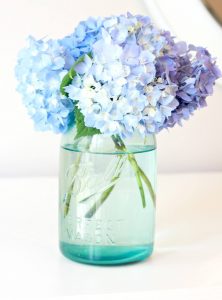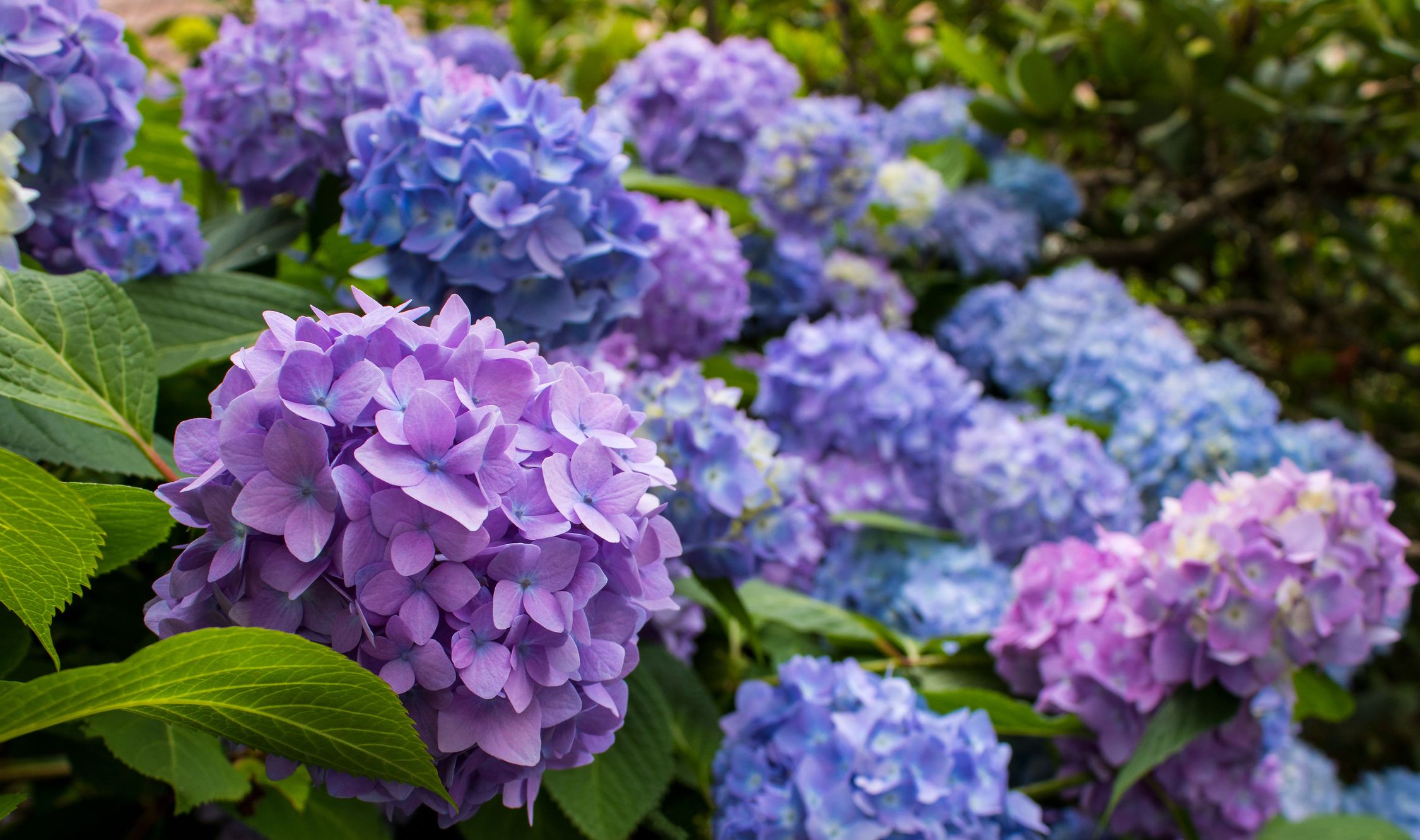The Guide to Healthy Hydrangeas
With immense flower heads, hydrangeas flaunt an old-fashioned charm that is hard to resist. These elegant ladies are easy to cultivate, tolerate almost any soil, and produce abundant blooms in beguiling colours of clear blue, vibrant pink, frosty white, lavender, and rose blossoms—sometimes all blooming on the same plant!
Producing healthy hydrangeas requires just a few simple growing tips. By following these you should be able to enjoy colourful blooms for many years to come.
Planting
For best results, you should plant your hydrangeas in early spring, however if you’re planting during the summer months, ensure you are generous at watering time. It’s important to remember that both the stems and the blooms require protection from the hot afternoon sun and strong winds. Full morning sun is preferred with some afternoon shade, however many will grow and bloom in partial shade. Most hydrangeas thrive in rich, moist soils, compost can be added to enrich poor soil. Add an all-purpose slow-release fertiliser and a great deal of organic matter to the soil – this will help give your hydrangea a good start. They bloom from early spring to late autumn.
At planting time, dig a hole that is as deep as the root ball and twice as wide. Set your plant in the hole, half fill it with soil and water. After the water has drained, fill the rest of the hole with soil. Make sure you water thoroughly afterwards too. If you’re planting multiple hydrangeas, space them 1-3 metres apart.
Basic Care
For the first couple of years after planting, and during any dry spells, make sure you water your hydrangeas regularly. The leaves will start to wilt if the soil is too dry.
Pests and ailments
When it comes to pests and ailments, hydrangeas are almost trouble-free. However, certain pests and diseases can attack. The most common time for them to do so is in the summer months. They most commonly suffer from powdery mildew, aphids, spider mites, yellow leaves and leaf spots. All of these are common to spot and treat, providing you catch the disease or pest early.
Too much sunlight
Other factors that will affect the health of your hydrangeas include giving your plants too much sunlight. If you notice blooms are fading fast, this is a sure sign they’re getting too much sun. Try to avoid placing both garden flowers and cut flowers in locations that sit directly in the hot, afternoon sun.
When the weather is warmer, make sure you give your plants plenty of water and add a layer of mulch to the roots to hold moisture in the soil.
Pruning
Hydrangeas can live for a great deal of time with little maintenance and certain species never need to be pruned. However, if your hydrangeas are looking a little unruly, it’s wise to trim failing flowers and stems back. This will encourage new growth and generous flowers for the next year. The best time to prune any variety of hydrangea is mid- late winter. Some people even hold off a bit longer in case there are any late frosts, so early spring is often an ideal time for pruning. Late frosts tend to damage any new buds that come through after pruning. If you prune too early you may promote new growth so holding off a bit is the best thing to do.
Quercifolia, Oakleaf varieties:
These species of hydrangea require little care or pruning. If you do notice dead blooms, remove these immediately post flowering (this is usually around midsummer).
Bigleaf, Mophead, or Lacecap Hydrangeas:
These Hydrangeas start flowering early to midsummer, with blooms often outlasting the summer months. This means buds tend to appear in late summer or early autumn. For best results, cut back the shoots with flowers, trim branches and remove and dying flowers, being mindful of new buds.
Read more on how to prune hydrangeas here
How to adjust hydrangea colour
Hydrangeas are able to produce a range of different hued flowers, including everything from pink and blue to lavender blooms, but not instantly. Colour alteration can take weeks, or even months. It is advisable to wait until the plant is two years old to give it time to recover from its original planting shock. It’s not every hydrangea that changes colour. The colour of some Bigleaf hydrangeas —especially Mophead and Lacecap types change colour based on the soil pH.
The colours all depend on where they have been planted and what plant food they have been given. It is the content of aluminium in the plant that controls its colour, with pH affecting the uptake of aluminium. With this in mind, if you plant hydrangeas in Alkaline soils, with a pH of 6.0 or more, they are more likely to create pink flowers, while the more acidic soils, with a pH 4.5 to 5.5, tend to produce blue blooms. Pink hydrangeas can however be turned blue, when aluminium sulphate is added to the soil, as this lowers the PH level.
Similarly, adding lime to the soil will heighten the pH levels, which will turn blue hydrangeas pink. When attempting to alter the colour of your flowers through using these minerals, it’s always important to add them sparingly and dilute them well, as too much of one chemical can scorch your plants. If you’re unable to alter the PH of your soil, you may wish to grow your hydrangeas in raised beds or containers to achieve the required hue. The only hydrangeas that aren’t affected by PH balances in the soil are white hydrangeas. Also note that it’s easier to change blue flowers to pink than pink to blue.
Read more here
Using in cut flower arrangements
As soon as the flowers begin to fully develop, this is when you should cut them. For best results, do so early in the morning. Try to cut at a diagonal, as this will encourage the flower stem to drink up more water. Cutting slits or fraying the ends will further enhance this. Remove all lower leaves on the stems too.
Soak your chosen flowers in a bucket of cool water for at least an hour before arranging them in a vase. When placing your vase in the household, avoid areas with draughts or locations that sit in direct sunlight. Both of these factors will cause the flowers to dry out.
















